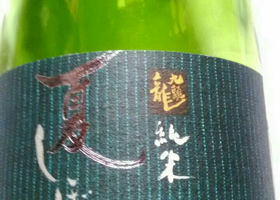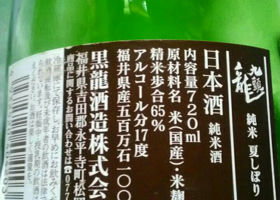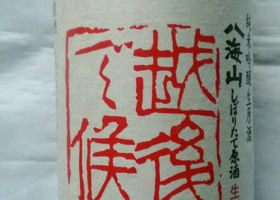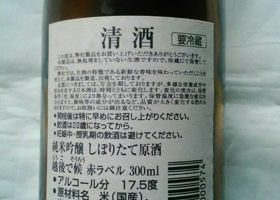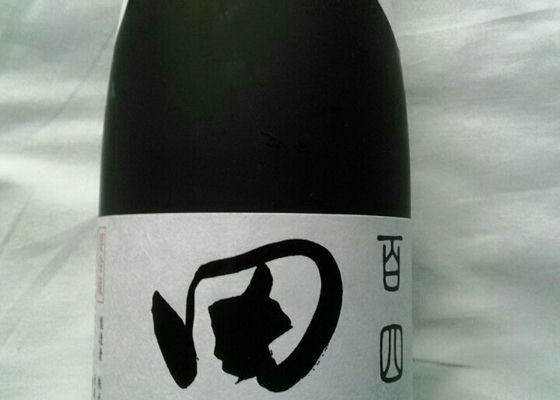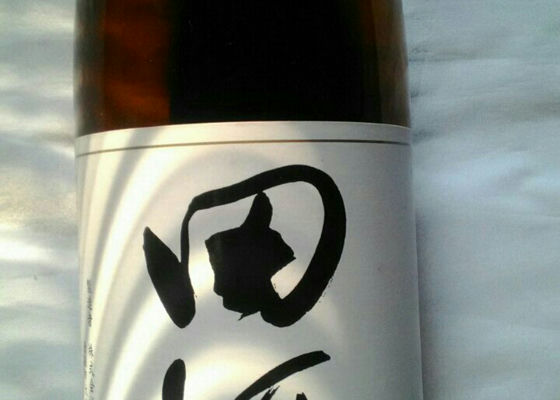Timeline
shitakkeIt is rich and sweet with a dry taste. It has a high alcohol content of 17 degrees. Freshly opened and cold, there was a roughness. When the temperature rises a little, full-bodied sweetness♩Pop label was also an eye-catching bottle! shitakkeLaughing Gate with Good Luck Appreciation is sweetness reminiscent of ripe melon! The sweetness is solid, but not stubborn, so the cup goes on! However, when it was too cold, it tasted a bit like alcohol. The temperature range is important. App Appreciated it was good luck and beautiful sake, suitable for first bottle in new year! おやじぃI look forward to working with you again this year, 🙇 shitakkeOyajii, thank you very much for your kind app♩I see you often! T.KISOHappy New Year, shitakke! You've chosen a lucky name ✨.
I'm looking forward to working with you again this year ⤵️. shitakkeT.KISO, thank you for New Year greetings! I was also posted good luck is very good luck App♩I want to be a little! shitakkeThe light astringency and freshness shine through! Pleasantly smooth and impressive on the tongue. When it's too cold, the sweetness is thin. When the temperature range rises a little, the sweetness and the heaviness that is typical of unfiltered undiluted sake also come out. Also, the acidity! shitakkeA well-balanced, delicious mouthful! I started drinking it at almost room temperature, and as the name suggests, it had a bit of an aged feel to it. The mouthfeel is more voluminous than normal water. The sweetness, bitterness, and acidity are calm. The sweetness, bitterness, and acidity are calm and easy to drink♩The rice used is 62% Yamadanishiki and 38% Omachi, and I imagine it's a good mix of both!
The rice used is not Yamadanishiki, but Yamadaho! It seems to be the parent variety of Yamadanishiki. shitakkeA clean acidity that lingers! It was a label buy, expectations were low, but it was a big hit. It's light and you can drink this as much as you want. Shouldn't they give up the name "challenge tub" (challenge tank) and change it to "Yokozuna tub" (champion tank)? And while I was thinking about all that nonsense, it was delicious!
Day 2, the acidity and bitterness got a little stronger. After opening it, it's hard to keep the taste. Choryu雄町 純米吟醸 原酒 ひやおろし純米吟醸原酒ひやおろし shitakkeDry with a hint of flavor. Almost room temperature at the beginning of the drink. No sweetness whatsoever! But it's not hard to drink. I don't know if this is a good analogy, but I drink it as a very light shochu. It's meant to be a sipping drink, but it goes into your body quickly!
The second day starts with a cold sake. On the back of the label, it says it's a little dry. Perhaps because it is an unpasteurized sake, it doesn't have a strong alcoholic flavor, but it does have a bitter aftertaste and a tongue-tickling sensation. It may not be suitable for those who don't like the dry taste. shitakkeThe balance shines through. The impression is that sweetness, sourness, umami, and bitterness come together just right. It's lightly sipped, and it's good for sipping sake. I could drink this drink on its own for a long time!
When it's freshly opened and cold, it has a watery, clear taste. It also has a slight spicy taste. I often think recently that the way you feel it changes depending on the temperature range is one of the interesting and difficult aspects of sake.
Compared to the same junmai ginjo sake (Ryosuka), the acidity is more subdued and the taste is more pronounced.
On the third day after opening it, I felt the flavors opened up and the gentle sweetness and umami reached its peak! It's very tasty. shitakkeNice acidity! The temperature starts off a bit high in the cold sake band. It has a ginjo feeling, but the sweetness is moderate. The sourness is just barely within the line of my personal taste, so this appraisal is pleasantly intoxicating...
Apparently, Sanpai has its own way of enjoying itself, but I think this is a drink that can be enjoyed cold or chilled! Also, as it approaches room temperature, the acidity seems to soften and the flavor comes out.
Tashu was launched in October 1974 with the intention of going back to the basics of sake and creating a real sake with style. Next month it will be exactly 46 years since it was released (it's got more history than I thought!) I'm happy if it's a little easier to get. shitakkeIt has a mild sweetness like a gourd, then a sharpness afterwards. It has a fresh impression. You may be able to drink this appraisal lightly.
Doi Sake Brewery used to be led by Mr. Shokichi Hase (who died suddenly in 2009), one of Noto's four toji, along with Mr. Naohiko Noguchi, but Mr. Shinba Minori has taken over and is brewing sake in the same Noto style. To put it bluntly, the Noto Toji is a group of brewers who originated in Ishikawa Prefecture, and Noto-style sake is rich and gorgeous. まこじぃI recommend the unfiltered pure rice sake, Akaiwa Omachi. It's a seasonal product, but you should try it! shitakkeThanks for your comment, Makoji! We had a delicious appetizer and recommended sake. More must-buy sake! 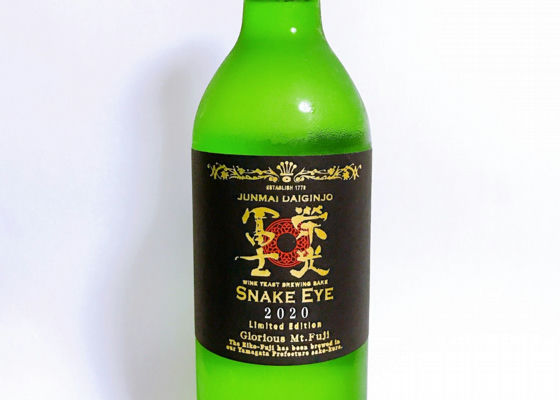
shitakkeIt smells and tastes like muscat. It doesn't have much of a muscat flavor when it's opened. If you're served something that's been sitting around for a little while and it's called wine, you might not recognize it as sake! It's not too sweet. I think the smoothness, on the contrary, emphasizes the fruity taste. It's the most surprising sake I've had in a while!
It was the first time I've felt the strangeness of the pairing. Today's food pairing was not shrimp mayo, but chicken mayo and ginger miso soup (Ryuuji's recipe). The muscat feeling was extraordinary when I drank it after eating the chicken mayo. I got to experience how differently the sake felt depending on what I ate with it!
Since the wine yeast used is wine yeast, it must have a white grape taste. The bottle is also perfectly shaped like a wine bottle. I bought this drink knowing it was made with wine yeast, and it was even better than I expected. The synergy of the eating combination was great! 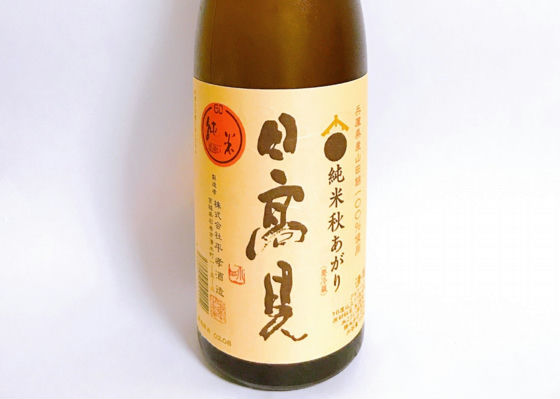
shitakkeA full-bodied autumnal sake. Easy to drink without being quirky, yet the sweetness and umami flows in! The acidity is so light that it feels light, which is a plus, and you can drink it without feeling the slightest bit heavy.
As the temperature range rises, the heaviness comes out a little bit, but if you want the feeling of drinking, it's just fine.
The terms "hiyaoroshi" and "akiagari" are notoriously difficult to understand.
Hiyaoroshi is a type of sake that is squeezed in the winter and stored in the fire, and then aged over the summer before being packed fresh for shipment.
Hiyaoroshi refers to sake that has matured over the summer and has improved in quality (such as flavor) before being shipped out. Hmmm, sounds like I understand it, or maybe I don't! LOL!
At any rate, "Akigari" means that the sake is an improvement over the original taste. By the way, on the contrary, if it didn't turn out to be a good sake, it's called "Akigari" or "Akifuji"! That's too many terms!
It's been a long time since I've had a four-pack at once. The more good it tastes, the more booze I have to drink, the worse it gets! I really need to get a grip! LOL (9/11) shitakkeIt's dry with a freshness to it. It's clearly labeled as dry, but there's a slight sweetness in the aftertaste. Even those who don't like dryness can enjoy it! It's a beautiful sake that I never get tired of drinking.
It must have originated from "Tedori River" that runs through Ishikawa Prefecture. In autumn, salmon seem to come back to the river from the sea. I think that salmon is prohibited to catch in the river, but if you apply to the local government under the guise of research, it should have been fine...
What I'm trying to say is that "Tedori River" is related to "salmon"! It's more than dry, so it should go well with fatty salmon in the ministry.
I heard at the liquor store that Tedorigawa serves sake in every season. It's nice to feel the spring, summer, fall and winter on the Tedori River, isn't it! (9/11) 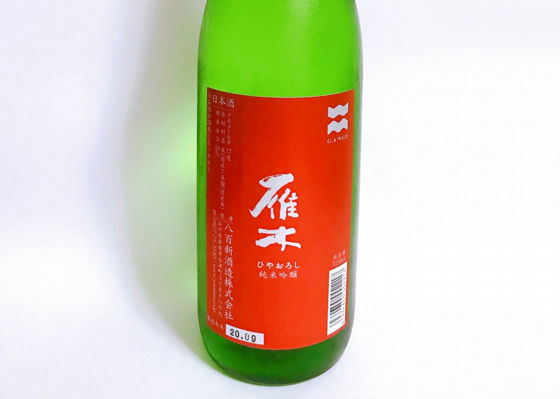
shitakkeVery clean drinking. No messiness! And yet, it's also very drinkable. The alcohol content is surprisingly high at 17 degrees. Perhaps that's what makes it such a well-balanced sake!
Terrifyingly, despite the high alcohol content, as long as you're conscious of it, you'll want to keep drinking it! If you fall in love with him, you lose! LOL!
The word "geese" is the name of a variety of things, although it's also the name of a chess game. One of them is the stair-stepped structure at the pier.
Yagokushin Shuzo, the brewer of Gangi, seems to aspire to be "a terminal of good taste, a sake that makes you want to have one more drink at the end of the day". We want our sake to be the kind of sake that you'll return to, no matter how far away you are. I liked the depth of this sake very much É
Hiyaoroshi is out and it feels like autumn. I feel like there's a lot of sake out there!
Two days after opening it, the sweetness is outstanding. It continues to taste great! 
shitakkeJust a hint of bitterness and a nice crispness! The sweetness isn't that strong, but it reminded me of a banana on the first sip. Maybe it's the slightly astringent taste that gave me that impression.
According to the back of the label, it was brewed on the theme of "a cooled Yamahai sake for drinking in the hot mid-summer. I'm impressed that this is exactly what they wanted to do!
The technical terms for sake such as Yamahai are a bit difficult to understand. Derived from the sake brewing process, the process of grinding rice and koji by paddles (Yamahai) is abolished, and lactic acid is produced in a simplified way by water koji.
Again, according to the back of the label, Yamairyu is generally enjoyed by heating up the matured sake. However, the label clearly states that this sake is designed to be drunk cold. For those of you who like to warm up, when it comes to this sake, just because it's Yamahai doesn't mean it should be warmed up! (9/1) shitakkeIt has a rich sweetness after the gas appellation and a light aftertaste when you open it. When the temperature goes up, it is like unfiltered raw syochu liqueur, so you can see different expression at different temperature range. And both are delicious! There's a lot of variety in Glorious Fuji, but this one makes me want to chase after it!
Sake Mirai, a rice produced in Yamagata Prefecture, is the result of 18 years of effort by Takagi Shuzo, a brewery in Yamagata, known for "Jyushiro", to improve the rice. It is described as having a gorgeous and rich taste.
The design of the label of Eiko Fuji is very elaborate. Some of them are cool, while others have a cute armored bear. And if there's a sake you're interested in, you'll be buying labels! shitakkeSlightly fizzy umeguchi. As the temperature rises, the freshly-opened alcohol taste fades and the crispness becomes more noticeable.
The rice used is Koshihikari, which is delicious eaten as rice. Another characteristic of the rice is that the flavor is stronger than the sweetness.
It seems that the rice is directly bottled so that it does not come into contact with the air. Therefore, there is a freshness that can only be tasted in the brewery.
The brewery, which is close to Kujukuri-hama, which overlooks the Pacific Ocean, also brews beer. Kujukuri Ocean Beer" is made from the water used to brew sake. This one is very appealing too! I'd love to try it. RecommendedContentsSectionView.title





